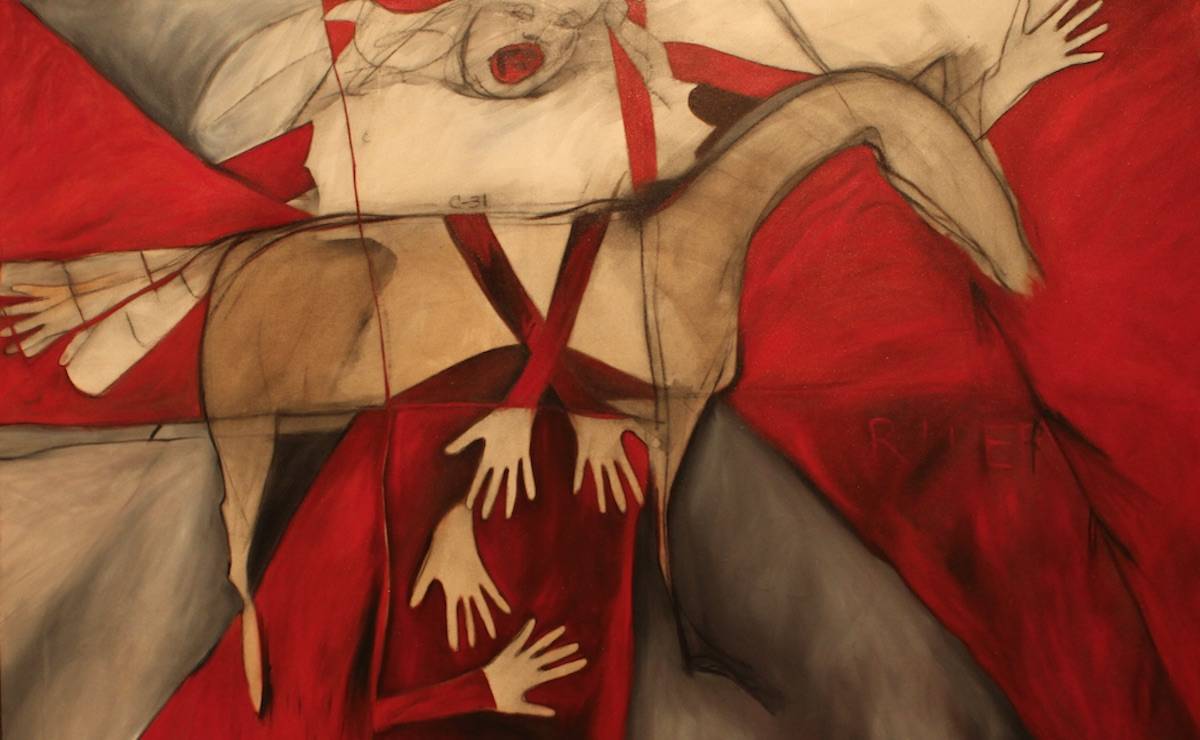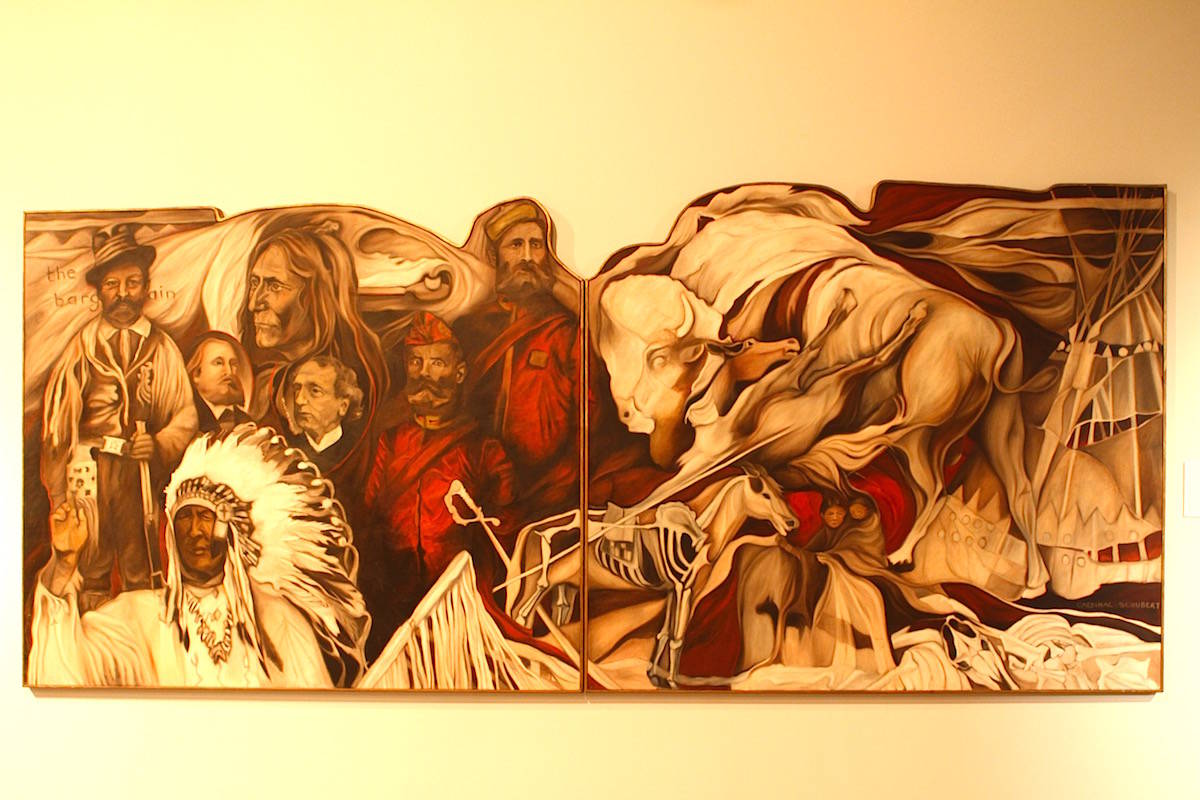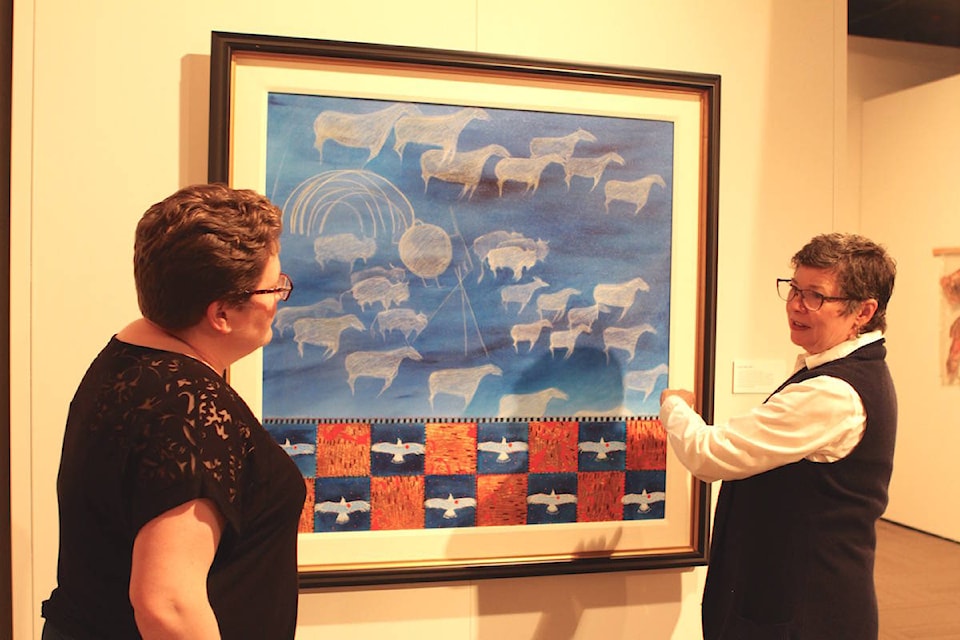Starving people, a ghost buffalo and skeleton horses populate Joane Cardinal-Schubert’s large painting The Great Canadian Dream – Treaty No. 7.
The Red Deer-born artist created portraits of the treaty signatories, including Canada’s first prime minister Sir John A. MacDonald. She also showed what the treaty brought to First Nations people: Starvation, disease, a ruined way of life.
The powerful, two-panel piece is in the exhibit Writing on the Wall, the Works of Joane Cardinal-Schubert, opening this week at the Red Deer Museum and Art Gallery and showing until Aug. 12.
Museum director Lorna Johnson calls it the largest local retrospective of Cardinal-Schubert’s work since the artist’s died of cancer at age 67 in 2009. “It’s special on a whole number of levels,” she said – including personal.
Johnson was a classmate of Cardinal-Schubert’s at the University of Calgary in the mid-1970s. She always felt the images painted by the Lindsay Thurber high school grad (and sister of nationally renowned architect Douglas Cardinal) to tell stories of Aboriginal tragedy and triumph were compelling.
But seeing three decades of Cardinal-Schubert’s work displayed in two gallery spaces made Johnson realize “what a force she really was … The impact of her work really hit me. I can see how her vision evolved.”
The exhibit spans from 1969, when Cardinal-Schubert painted in an expressionistic style to abstract, idea-driven art created in the last two decades of her life.
Indigenous motifs of horse, wolf and eagle become prominent in such paintings as Letters to Emily, which also includes an imagined letter showing her allegiance to Emily Carr, as another female artist.
From 1980 on, Cardinal-Schubert created mixed-media ‘warshirts,’ sometimes as angry statements against environmental destruction, residential schools, museums appropriating early cultural artifacts and various forms of racism.
Johnson believes Cardinal-Schubert’s work, now taught at universities, became influential because it’s prescient. She noted The Lesson, a blackboard installation from 1989 that has been recreated for this exhibit (from written instructions left by the artist) by her husband and two sons.
It pays tribute to murdered Aboriginal women, as well as Robert Smallboy, an Ermineskin chief who died of gangrene in 1984 after contracting frostbite upon being refused a hotel room in Banff. “That’s well before the Truth and Reconciliation Commission,” Johnson noted.
Cardinal-Schubert was only the fourth woman (and first Aboriginal woman) artist to be admitted to the Royal Canadian Academy of Arts. Among her many honours is an honorary doctorate from the U of C.
She was a curator, writer and activist for native sovereignty. One of her last challenges was helping identify and recommend Aboriginal art purchases for the Alberta Foundation for the Arts.
Johnson remembers Cardinal-Schubert as being “very strong, articulate and vocal about her feelings and beliefs.” The Writing on the Wall exhibit, originally curated by the Nickle Galleries in Calgary, allows viewers to discover this for themselves.
There’s an opening reception Friday, May 4, at 7 p.m.


